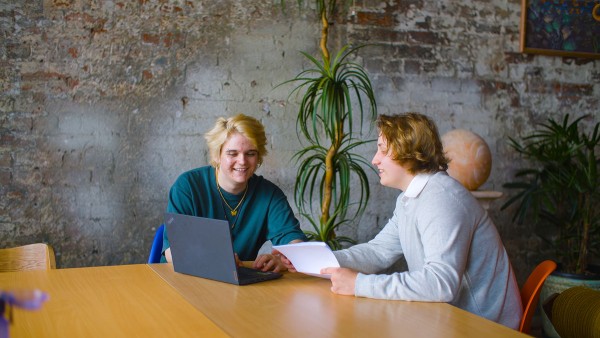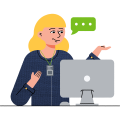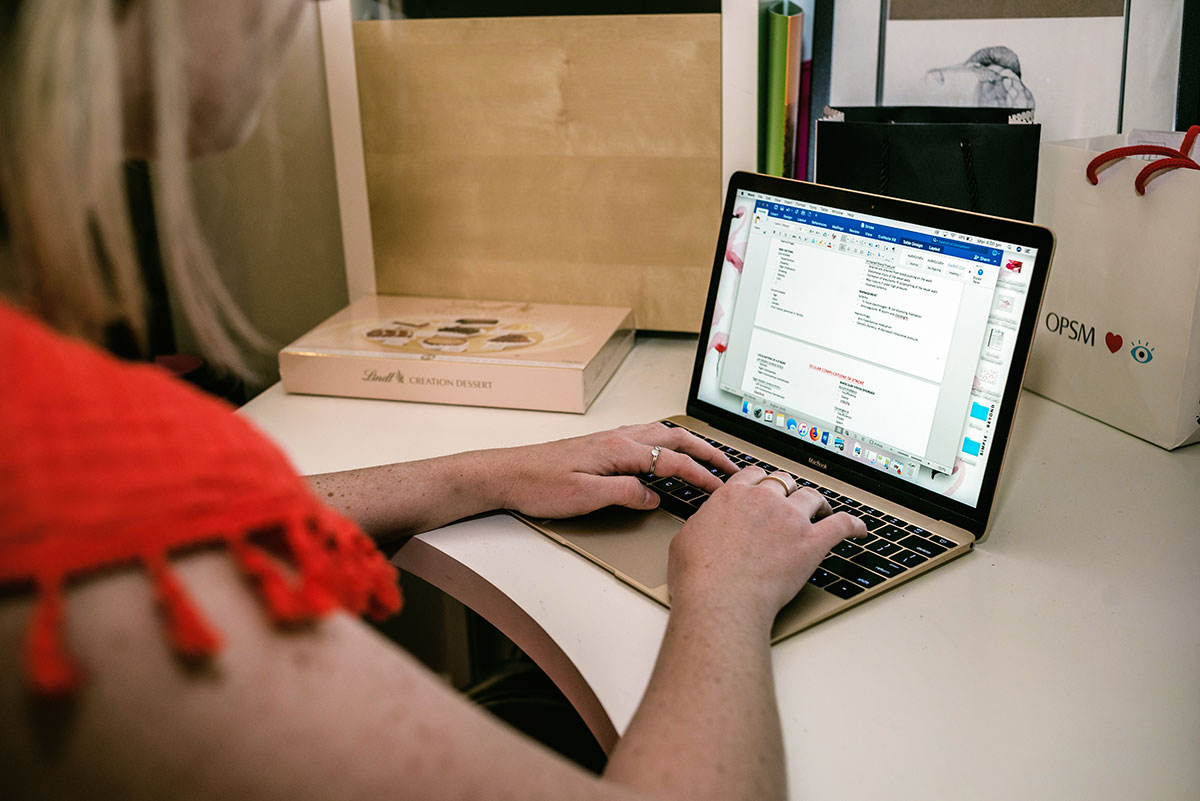Your resume is one of the most important tools in your job search. A well-written resume can open doors to opportunities where you can showcase your interviewing skills, industry knowledge, and practical abilities. With a great resume, you’ll improve your chances of making a strong first impression to potential employers.
If you already have a resume, personalising it can really help you stand out. In this article, we’ll explain what a resume is and why it matters. You’ll discover what to include in your resume, learn how to build it and find tips on personalising it for different jobs.
If you haven’t got a resume yet, check out our guide on how to write your first job resume.
What to include in a resume
If you already have a basic resume and some work experience, you can take it to the next level by tailoring it for industry-specific jobs or other opportunities like apprenticeships, internships, or university placements. A standout resume not only demonstrates your skills and experiences but also highlights your achievements in a way that grabs the attention of potential employers.
Here’s what you should include in your resume:
- Contact details: Your name, phone number, email address, and LinkedIn profile (if you’ve got one). Make sure this information is up-to-date and work appropriate.
- Objective/personal summary: A brief statement about your career goals and what you hope to achieve in the role you’re applying for. Tailor this to each job to show why you’re a great fit.
- Relevant hard and soft skills: Highlight both hard skills (e.g., technical skills like computer programming, graphic design) and soft skills (e.g., communication, teamwork) that are relevant to the job you're applying for. Instead of just writing something like “team player” in this section, include a sentence or two that demonstrates these skills. For example, you could say ‘Recognised as a team player through taking on additional responsibilities, including assisting with the training of new staff.’
- Education: Include relevant educational background information, such as the school/s you attended, degrees or certificates you’ve earned or are working towards and relevant coursework or academic achievements. You could also include job-specific qualifications and certificates such as a Working with Children Check (WWCC), First Aid qualification, Responsible Service of Alcohol (RSA) or forklift licence. This can show potential employers that you’re ready to start and have the necessary certifications and skills for the job.
- Professional experience: List your work history in chronological order (starting with most recent experience), focusing on your key responsibilities and accomplishments. For each role, include specific examples of how you contributed to projects or went above and beyond your standard duties.
- Additional sections: Include any certifications, volunteer work, or other relevant activities, such as academic, sporting, or community-focused awards. These sections highlight your dedication to your field and showcase any additional skills you bring to the table.
- References: Include references or a note that they’re available upon request.
Achievements
When detailing your experiences and achievements, don’t just list tasks—highlight specific projects or additional responsibilities you took on. Show how your contributions led to positive outcomes, whether it was completing a significant project, improving a process or receiving recognition by including numbers or statistics where possible.
How to build your resume using the STAR method
Using the STAR method to describe your job duties and achievements can make your resume stronger and more impressive. The STAR method is often used for answering behavioural interview questions, making it a valuable tool for both your resume and interview preparation. STAR stands for Situation, Task, Action and Result. This method allows you to present your experiences in a structured and impactful way, demonstrating your ability to handle various situations.
How to use the STAR Method
- Situation: Describe the situation or challenge you faced.
- Task: Explain what your responsibility was in that situation.
- Action: Describe the steps you took to address the task.
- Result: Share the outcomes of your actions, ideally with measurable results.
Tips for building your resume with the STAR Method
- Spend some time reflecting on your skills and achievements. Identify areas where you can use the STAR method to highlight these experiences.
- Focus on your actions. Make sure to highlight what you specifically did, not just what the team accomplished. This shows potential employers not just what you did, but how it benefited your team or company, helping them to see your personal impact and the value you can bring.
- Highlight your results. Make sure to include the positive outcomes of your actions, such as improvements or successes. This helps employers see the actual impact you had and what you could bring to their team.
- Example of a STAR achievement: ‘Organised a school charity event by planning the event, leading a social media campaign, designing promotional material and gaining local business sponsorships, boosting fundraising by 50%.’

Resume writing tips
Here are some simple tips on what to do and what to avoid when writing your resume:
Dos:
- Do continuously update your resume: Regularly add new skills, experiences, and achievements to keep your resume current. This could also include other activities such as volunteering, sporting achievements or professional development short courses. This will save you time later down the track.
- Do use natural language: Write your resume in a way that reflects how you speak to ensure authenticity.
- Do utilise industry-specific language: If you’re applying for a specific role in a specific industry, you could incorporate relevant frameworks, regulations and acronyms commonly used in that industry. But - only do this if you have worked in the industry and actually understand the language you are using.
- Do research the company: Tailor your resume by mentioning recent projects, innovations, or key initiatives of the company you're applying to. A good place to start for this information is to check out the company’s ‘about us’ section on their website.
- Do be selective with what you include: Focus on the most recent and relevant positions that showcase your skills and achievements. Remove old jobs or roles that don’t add value to the position you’re applying for.
- Do spell check carefully: Make sure to proofread your resume and pay attention to spelling, especially business names. Remember to set your document settings to Australian English.
- Do format and name the document properly: Name your file with the role and company you're applying for, such as "John Doe Retail Assistant XYZCompany." This makes it easy for hiring managers to identify and file your application. Read more about formatting your resume.
Dont's:
- Don’t use generic descriptions: Don't use vague job duties from the internet; be specific about your roles and achievements.
- Don’t say what you think they want to hear: Instead of writing your resume to reflect what you think employers want to hear, focus on being true to yourself. Highlight your real skills, experiences, and achievements.
- Don’t use the same resume for multiple roles: Customise your resume for each job application to better match the job requirements.
- Don't copy-paste from AI programs: You can use AI-generated content as a foundation, but always edit and personalise it. Be aware that Applicant Tracking Systems (ATS) and employers may use AI detectors to spot unoriginal content.
- Don’t overuse buzzwords: While it’s important to use industry-specific language where relevant, relying too heavily on trendy buzzwords can make your resume seem generic. Focus on clear, specific descriptions of your skills and achievements.
Building a great resume takes time and effort, but with these tips, you'll be on your way to making a strong impression. Remember, your resume doesn’t get you the job directly—it helps you stand out and get an interview. If you need support or would like some advice, headspace is here to help.
Get support
If you're aged 15 - 25 and want some advice on building your resume, job searching, applying for work, and everything in between, get free and confidential support from headspace Work and Study and sign up for one-on-one support.
For support with your mental health and wellbeing, find your nearest headspace centre or access online and telephone support via eheadspace.
The headspace Content Reference Group oversee and approve clinical resources made available on this website.
Last reviewed September 2024
SEEK. (N.D). How to get your resume past the robots. https://www.seek.com.au/career-advice/article/how-to-make-sure-a-human-reads-your-resume
SEEK. (N.D). Writing your resume. https://www.seek.com.au/career-advice/article/resume-cv
SEEK. (N.D). 7 signs your resume is just right. https://www.seek.com.au/career-advice/article/7-signs-your-resume-is-just-right
SEEK. (N.D). 5 ways to talk to achievements in your resume. https://www.seek.com.au/career-advice/article/how-to-talk-about-achievements-in-your-resume
Youth Central. (N.D). How to write a resume. https://www.youthcentral.vic.gov.au/jobs-and-careers/applying-for-a-job/what-is-a-resume/how-to-write-a-resume
Get professional support
If you feel you need help there are a range of ways we can support you.

